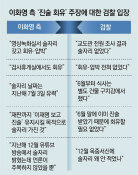Earthquakes become more frequent, powerful in Korea
Earthquakes become more frequent, powerful in Korea
Posted July. 07, 2016 07:53,
Updated July. 07, 2016 07:59
The magnitude 5 earthquake that jolted the Ulsan area in the southern party of South Korea on Tuesday was the fifth most powerful since the country started seismological observations. As the quake was powerful enough to be felt by people watching movies, the authorities were inundated with telephone reports and inquiries from panicking citizens. Considering that the quake was also felt in Chungcheong and Gyeonggi provinces, it was presumably very strong -- a reaffirmation that the Korean Peninsula is not immune to earthquakes.
Between 2011 and 2015, the Ulsan area had 18 earthquakes measured 2.0 or higher on the Richter scale, the same as those that struck the country between 1991 and 2010. Earthquakes have become more frequent and stronger. As the southeastern coastal areas have clusters of energy and industrial complexes, frequent quakes cause concerns. There are 14 nuclear power plants and a mid- to low-level radioactive waste repository near Ulsan.
The magnitude 9.0 Great East Japan Earthquake in 2011 was 10,000 times stronger than the magnitude 5.0 Ulsan quake, but Japan's nuclear power plants were not affected. The problem was tsunami. The rushing seawater flooded the underground level of the nuclear power plant, damaging emergency diesel power generators and leading to a major catastrophe involving a nuclear meltdown. Although South Korean nuclear power plants are designed to endure earthquakes with a magnitude of 6.5 to 7.0, the government has spent 1.2 trillion won (1 billion U.S. dollars) to reinforce safety measures for the facilities since the Fukushima disaster in Japan.
What really concerns us is the insufficient quake-resistant designs and poorly conducted earthquake drills. Although earthquake-resistant designs became mandatory from 1988, about half of the buildings across the country were built before that. It is also possible that even quake-resistant buildings could cause secondary damage because of exterior materials such as tiles and glass falling off. Korea had four earthquakes with a magnitude of 5.0 to 5.9 between 1978 and 2014, compared with 3,357 in Japan. Japanese people are used to earthquakes and usually do not panic over magnitude 5 quakes. They prepare themselves for earthquakes by downloading quake warning applications. They receive training on how to protect themselves in the event of an earthquake from childhood. With more frequent and stronger earthquakes, Koreans should learn about them.
정성희기자 shchung@donga.com







